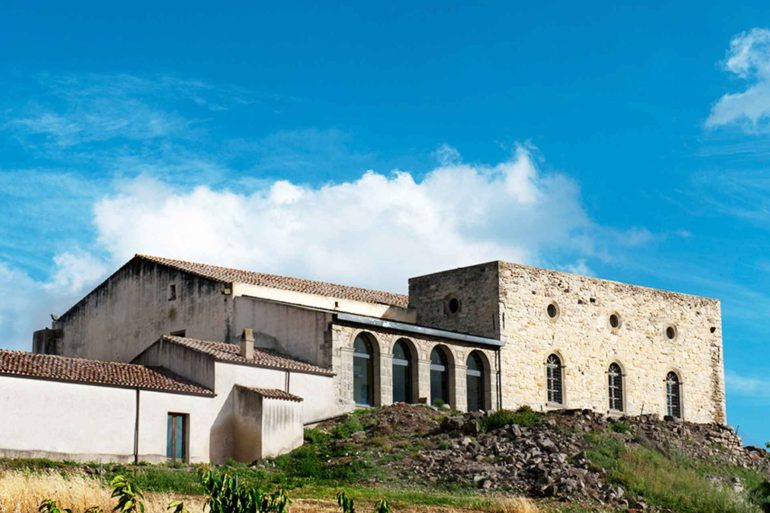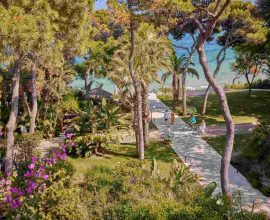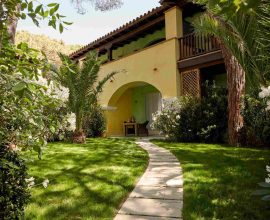Casa Zapata in Barumini: a unique museum complex.
Casa Zapata in Barumini: the fascinating Hispanic architecture building home to an important museum complex
The museum complex now houses the ethnography, history and archaeology sections, in a location that has been a centre of power since prehistoric times.
Sardinia has a lot to offer in addition to a crystalline sea and fabulous beaches thanks to a hinterland rich in beautiful landscapes, tradition, culture and history.
In the heart of the Marmilla area, less than an hour from Cagliari, Casa Zapata awaits visitors. This charming noble palace from the seventeenth century is a rare example of Hispanic civil architecture in Sardinia.
It is located in Barumini, opposite the parish church of the Blessed Virgin Immaculate. From there the archaeological site of Su Nuraxi, a UNESCO World Heritage Site can be seen. This is an important testimony of the Nuragic civilization that covers a time span of over two thousand years.
Casa Zapata was commissioned by Don Azor, acalde of Cagliari, at the end of the sixteenth century as the residence of the Zapata family, above a nuraghe.
The residence of the feudal lord and Baronial See, spread over two floors, has classical architectural lines and decor: the façade has windows and a portal characterised by triangular gables resting on smooth columns with basket capitals, double bull base and fluted jambs.
The central tympanum bears the coat of arms of the noble family, a vermilion shield with three golden checkered shoes.
It boasts an elegant adjoining garden and two walls built in the early twentieth century, used as stables, warehouses and farmer’s house, overlooking a large courtyard.
Upon the death of the family’s last heir Baroness Donna Concetta Ingarao Zapata, in the eighties, Casa Zapata was left in a state of neglect until the Municipality of Barumini bought it in 1987.
Three years later, in 1990, work began to transform the building into a museum but was interrupted shortly after, as soon as the vestiges of an imposing complex nuraghe were discovered below the structures of the palace.
From that moment on, excavation campaigns followed one another (which continue today) and the museum project was carried out without distorting the building and, at the same time, making the Nuragic complex visible from above, thanks to a system of glass floors and suspended walkways.
Crossing the threshold of a noble residence of the seventeenth century and finding yourself in the presence of a nuraghe of such dimensions is an exciting experience, to say the least.
“Su Nuraxi ‘e Cresia” and the equally interesting sections of the museum complex
The museum complex of Casa Zapata is divided into three sections.
The archaeological area is distinguished by “Su Nuraxi ‘e Cresia”, (the nuraghe of the church, so called by Professor Giovanni Lillui for its proximity to the parish church), a ” troubled nuraghe complex ” with a central tower, the “keep”, around which unfold three perimeter towers joined by straight wall curtains.
It has the peculiarity of having two courtyards, the first one on the inside of the bastion, boasting a well, and the other on the outside, connected to the first by an entrance with an architrave located in the curtain wall to the southeast.
The excavations, conducted since 2005 in the external courtyard, have highlighted the original flooring of the structure, with paving dating back to the Recent Bronze Age.
At present, the east tower and the keep are visible inside Casa Zapata, while the village, the double intermural and the south and west tower develop outside the building.
The section dedicated to archaeology, in addition to the nuraghe, houses an important collection of over 180 artefacts found in the archaeological area Su Nuraxi during the excavations conducted by Professor Lillui in the fifties.
The historical archival section, set up inside one of the buildings of agricultural relevance, houses some of the most significant documents belonging to the community of Barumini and the archive of the Zapata family.
The display cases preserve the original documents while the panels portray some of the most important papers belonging to the collection of Donna Concetta Ingarao Zapata, over ten thousand documents made available to the public in a digital version by Dr. Andrea Lorenzo Ingarao Zapata of Las Plassas.
Finally, the ethnographic section, also set up in one of the agricultural buildings, consists of a small room that collects some of the most common objects of the last century, which belonged to the inhabitants of Barumini and the surrounding countries. It also houses the Regional Museum of Launnedas, a space dedicated to ancient and traditional Sardinian musical instruments.
Would you like to visit the Casa Zapata Museum complex and experience a fabulous holiday in an authentic paradise? Discover Forte Village Resort in Sardinia
Photo credit: Fondazione Barumini






